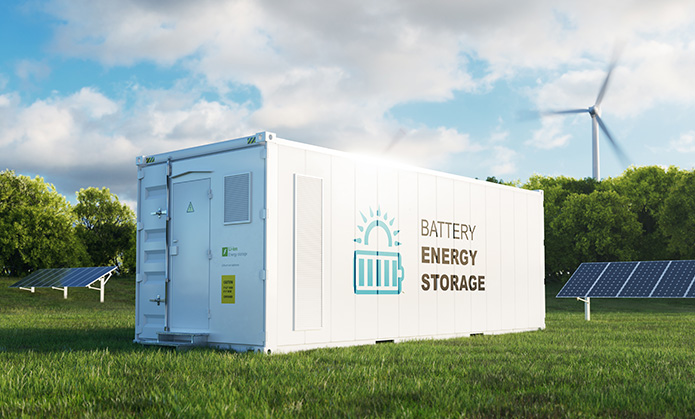Incentives and Innovation Charge Up Battery Projects in New England


The benefits of living in the storage decade currently may be greatest in New England, where utility and government programs, and innovations in storage technology, help organizations reach their sustainability goals while improving facility resiliency and decreasing operations, maintenance and energy expenses.
New England facilities can reap energy storage benefits such as on-bill savings and grid services revenue without the costs or responsibilities of ownership by partnering with energy-storage-as-a-service (ESaaS) providers such as CPower. Commercial and industrial organizations can avoid the interconnection engineering, capital investment and O&M responsibilities associated with a battery project by having an ESAS provider design, install and operate the battery on their behalf.
Meanwhile, at a macro level, behind-the-meter storage enables the renewable energy transition from more emission-intensive options while supporting the reliability of the grid, thanks to the foundation of state policies and programs that support battery adoption. For example, Connecticut’s Energy Storage Solutions program offers organizations upfront incentives for installed battery capacity plus performance-based incentives for dispatching the battery capacity to the grid.
Federal incentives available under the Inflation Reduction Act could accelerate the adoption of batteries even more — Bloomberg NEF projects the landmark legislation to drive the development of 111 GWh of energy storage. The IRA includes a stand-alone Investment Tax Credit for energy-storage projects, which effectively reduces a storage project’s costs by 30%.
Battery capacity in the US has already more than tripled since the start of 2021 and Massachusetts has been one of the states where it has grown the fastest. According to Utility Dive, Massachusetts now ranks fifth nationally in battery capacity due to the combination of a state requirement that solar projects of more than 500 kW be paired with energy storage, performance incentives for behind-the-meter active demand reduction, including battery storage, and programs that incentivize time-shifting of clean-energy generation like wind and solar.
On-site behind-the-meter storage can also provide on-bill savings for New England organizations through reduced demand charges on utility bills and reduced capacity tag charges on supply bills. For example, a healthcare facility in Connecticut projects $186,000 in on-bill savings in the first year after installing a battery through CPower. Importantly, these on-bill savings are in addition to the performance incentives paid by utilities and grid operators.
Storage projects can help organizations achieve their sustainability goals as well by cutting regional emissions. A higher education institution in Massachusetts with a 1.3 MW 3-hour battery reduced annual emissions of carbon dioxide (CO2) by nearly 46 metric tons, which is equivalent to not burning 50,364 pounds of coal per year, through targeted charge and dispatch of the battery to maximize energy use from cleaner resources.
As the storage decade continues, solutions like CPower’s artificial-intelligence-driven EnerWiseTM Site Optimization software can help New England organizations maximize the financial return and sustainability benefits of their batteries and other distributed energy resources by analyzing and automatically executing the most efficient demand-side energy management strategies.
To learn more about CPower’s EnerWise Site Optimization solution or energy storage services, call us at 844-276-9371 or visit CPowerEnergy.com/contact.
Darren Hammell
Darren is CPower’s Director of Energy Storage. He is also the former Founder and CEO of Princeton Power Systems as well as a member of the Board of Directors of Andluca Technologies (PV-powered “smart” windows). He was a “Gerhard R. Andlinger Visiting Fellow” at Princeton University’s Andlinger Center for Energy and the Environment where he taught “Energy Innovation and Entrepreneurship.”


